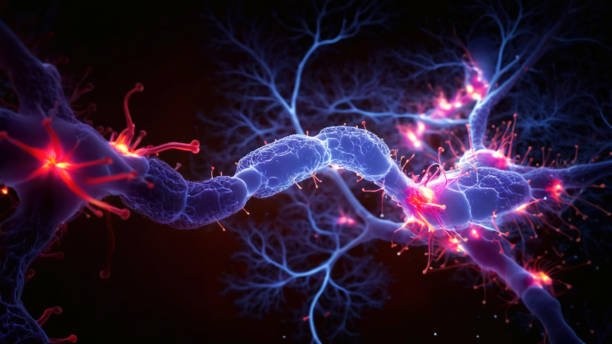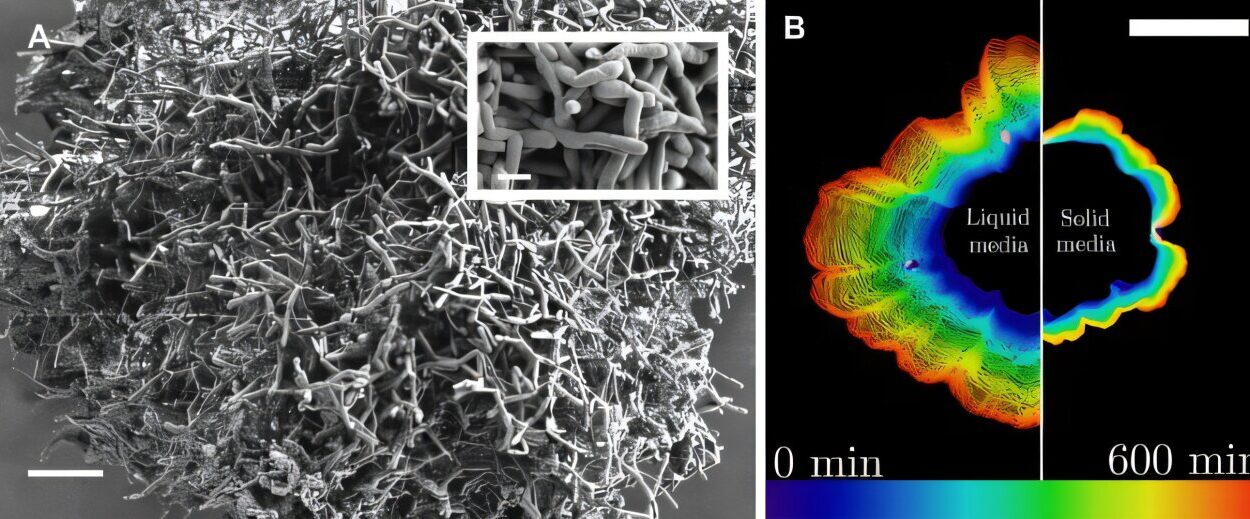In the complex, intricate world of the human body, few structures are as remarkable as the neuron. While our bones, muscles, and organs each play vital roles in the physical operation of our bodies, it is the neurons that carry out the very essence of what it means to be alive—to think, feel, move, and interact with the world around us. From the moment a child takes their first breath to the final moments of life, neurons are in constant action, transmitting signals that form the basis of our thoughts, actions, and experiences.
A neuron is not just a cell; it is the unit of communication within the nervous system, responsible for carrying electrical impulses throughout the body. It’s these impulses that allow us to sense the world, react to stimuli, learn new information, and remember the past. They form the foundation for everything from reflexes to reasoning, and they are at the heart of our very consciousness.
Despite their fundamental role in all aspects of human life, neurons remain one of the most fascinating yet poorly understood aspects of biology. What exactly is a neuron? How do they work, and why are they so critical to our existence? In this article, we will delve into the world of neurons, exploring their structure, function, the different types that exist, and their importance in health and disease.
The Anatomy of a Neuron
To understand what a neuron does, we must first understand its structure. Neurons are specialized cells designed to transmit electrical signals across the body. Their design is highly sophisticated, allowing them to perform their critical function efficiently. A typical neuron consists of three main parts: the cell body (soma), dendrites, and the axon.
The Cell Body (Soma)
The cell body, or soma, is the central part of the neuron. It houses the nucleus, which contains the cell’s genetic material, and is responsible for maintaining the health and functioning of the neuron. The soma is also where most of the cell’s metabolic activities take place, including protein synthesis and energy production.
Within the soma, there are various organelles, including mitochondria, which provide the energy the neuron needs to transmit signals. The soma serves as the processing center of the neuron, receiving inputs from other neurons through the dendrites and determining whether or not to send an electrical signal down the axon.
Dendrites: The Neuron’s Antennae
Dendrites are tree-like structures that branch out from the cell body. They function as the receptive part of the neuron, receiving electrical signals from other neurons or sensory cells. The surface of dendrites is covered with tiny protrusions called dendritic spines, which form synapses with the axon terminals of neighboring neurons.
These connections are crucial for communication within the brain. When a neuron receives a signal, the dendrites transmit it to the cell body, where it is processed. The number and structure of dendrites vary widely between different types of neurons, depending on their role in the nervous system.
The Axon: The Neuron’s Highway
The axon is a long, cable-like projection that carries electrical impulses away from the cell body toward other neurons, muscles, or glands. Axons can be extremely long, stretching several feet in some cases, especially in the case of neurons that transmit signals from the brain to the spinal cord or from the spinal cord to the limbs. To aid in signal transmission, many axons are covered with a fatty substance called myelin, which acts as an insulating layer.
Myelin enables faster transmission of electrical signals, ensuring that messages are delivered efficiently across long distances within the body. The areas where the axon is not covered by myelin are called the nodes of Ranvier, where electrical impulses jump from one node to the next, speeding up the signal even further.
Axon Terminals and Synapses
At the end of the axon, the axon terminals make synaptic connections with other neurons or target cells. A synapse is a small gap between two neurons or between a neuron and a muscle or gland. This is where the electrical signal is converted into a chemical message, which crosses the synapse and is picked up by the dendrites of the next neuron, continuing the transmission of the signal.
Neurotransmitters—chemical messengers—are released into the synapse and bind to receptors on the postsynaptic neuron, transmitting the signal. This process is critical to communication in the brain and nervous system, as it allows neurons to interact and transmit information.
Electrical Signaling in Neurons
Neurons are remarkable not only for their structure but also for their ability to generate and propagate electrical signals. These signals, known as action potentials, are how neurons communicate with one another and with other cells in the body. The process of electrical signaling in neurons is a finely tuned sequence of events that enables rapid and accurate transmission of information.
Resting Potential: The Neuron at Rest
When a neuron is not transmitting a signal, it is in a state known as the resting potential. During this phase, the inside of the neuron is negatively charged relative to the outside. This charge difference is maintained by the selective movement of ions—charged particles—across the cell membrane, through ion channels.
The primary ions involved in this process are sodium (Na+), potassium (K+), chloride (Cl-), and calcium (Ca2+). The sodium-potassium pump, a protein embedded in the cell membrane, actively transports sodium ions out of the cell and potassium ions into the cell, creating a concentration gradient. This gradient is crucial for the neuron’s ability to generate action potentials.
Action Potential: The Neuron Fires
When a neuron receives enough stimulation to reach a certain threshold, an action potential is triggered. This is an all-or-nothing electrical signal that travels down the axon, carrying information from one part of the body to another.
The action potential begins when ion channels in the neuron’s membrane open, allowing sodium ions to rush into the cell. This influx of positively charged ions depolarizes the membrane, making the inside of the neuron less negative. Once a certain voltage is reached, the action potential propagates down the axon, as more sodium channels open, and the wave of depolarization continues along the length of the axon.
After the peak of the action potential, potassium channels open, allowing potassium ions to flow out of the neuron, repolarizing the membrane and returning the cell to its resting potential. The entire process is incredibly rapid, occurring in just a fraction of a second.
Propagation of the Signal
Once initiated, the action potential moves along the axon like a wave, traveling toward the axon terminals. In myelinated neurons, the action potential travels much faster than in unmyelinated neurons because the myelin sheath allows the signal to jump from one node of Ranvier to the next, bypassing the insulated portions of the axon. This process, known as saltatory conduction, allows for faster and more efficient transmission of signals.
At the axon terminals, the electrical signal is converted into a chemical message, which crosses the synapse and binds to receptors on the next neuron. This is where the communication between neurons occurs, allowing signals to be transmitted across vast networks of interconnected cells.
Types of Neurons
Neurons are not all alike. Different types of neurons exist, each with specialized functions depending on their role in the body. Broadly speaking, neurons can be classified into three major categories: sensory neurons, motor neurons, and interneurons.
Sensory Neurons: Detecting the World Around Us
Sensory neurons are responsible for converting external stimuli, such as light, sound, and touch, into electrical signals that can be processed by the brain. These neurons are specialized to detect specific types of sensory information, such as photoreceptors in the eyes that respond to light or mechanoreceptors in the skin that respond to pressure.
Once sensory neurons detect a stimulus, they transmit the electrical signal to the central nervous system (CNS), where it is processed and interpreted. Sensory neurons are essential for perception and play a critical role in our ability to interact with the environment.
Motor Neurons: Controlling Movement
Motor neurons transmit signals from the CNS to muscles and glands, enabling movement and other bodily functions. These neurons are responsible for controlling voluntary movements, such as walking and writing, as well as involuntary actions, such as the beating of the heart and the contraction of smooth muscles in the digestive tract.
Motor neurons are connected to muscle fibers at specialized junctions called neuromuscular synapses. When a motor neuron fires, it releases neurotransmitters that stimulate the muscle fibers, causing them to contract.
Interneurons: The Brain’s Network
Interneurons are the most abundant type of neuron and are responsible for processing information within the CNS. These neurons connect sensory neurons to motor neurons, facilitating communication between different regions of the brain and spinal cord. Interneurons play a crucial role in reflexes, learning, memory, and decision-making.
Interneurons are often organized into complex networks, allowing them to process and integrate vast amounts of information simultaneously. This allows the brain to perform complex tasks, from processing sensory input to coordinating motor actions and higher cognitive functions.
Neurons and Neuroplasticity
One of the most remarkable features of the brain is its ability to change and adapt over time. This process, known as neuroplasticity, refers to the brain’s capacity to reorganize its neural connections in response to learning, experience, or injury.
Neuroplasticity occurs at the level of the neuron itself. When you learn something new, your brain forms new synaptic connections between neurons, strengthening the communication between them. This allows for improved memory, motor skills, and cognitive abilities. Conversely, when you stop using certain neural pathways, those connections may weaken or even disappear.
This plasticity is most evident during childhood when the brain is especially malleable. However, the adult brain is also capable of plasticity, albeit to a lesser extent. Neuroplasticity is thought to play a key role in recovery after brain injuries and in adapting to new experiences.
Neurons in Health and Disease
Neurons are vital for normal brain function, but they are also susceptible to a wide range of diseases and conditions. Disorders affecting neurons can lead to cognitive decline, motor impairment, and even death.
Some of the most well-known neurological diseases include:
- Alzheimer’s Disease: A progressive neurodegenerative disorder that causes memory loss, confusion, and behavioral changes. It is characterized by the accumulation of abnormal protein deposits in the brain, leading to neuron death.
- Parkinson’s Disease: A movement disorder caused by the degeneration of dopamine-producing neurons in the brain. Symptoms include tremors, stiffness, and difficulty with movement.
- Multiple Sclerosis: An autoimmune disease in which the immune system attacks the myelin sheath surrounding neurons, leading to impaired communication between the brain and the rest of the body.
- Epilepsy: A neurological disorder characterized by recurrent seizures due to abnormal electrical activity in the brain.
- Amyotrophic Lateral Sclerosis (ALS): A condition that affects motor neurons, leading to muscle weakness and eventual paralysis.
Neurodegenerative diseases such as these highlight the importance of maintaining healthy neurons and the challenges that arise when this delicate system goes awry.
Conclusion: The Unseen Architects of Thought
Neurons are the very foundation of our ability to experience, learn, and interact with the world. Their complexity, efficiency, and adaptability make them a cornerstone of both the brain and the nervous system. Every thought, emotion, action, and sensation is made possible by the intricate network of neurons working in harmony, transmitting electrical signals across the body with remarkable precision.
As we continue to unravel the mysteries of the brain, one thing is certain: the neuron is the most fundamental unit of our consciousness and existence. By understanding these incredible cells, we gain insight into the very nature of who we are—both as individuals and as a species.






